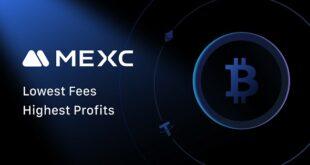Blockchain is a ledger for storing and transferring digital assets. Assets can be anything: money, stocks, game characters, works of art – anything. The idea is that the blockchain allows you to take something on the Web and say: “This is mine.” And no one can steal it from you, hack or rewrite it.
All records in the blockchain are stored in the form of blocks interconnected by special keys. If you change any record, the keys of the blocks will not match, and the chain will collapse. Therefore, blocks in the blockchain cannot be deleted and edited – you can only see what is inside.
Initially, blockchain was a niche technology for signing digital documents. And then enthusiasts guessed to use it to transfer money between people – without banks, e-wallets and other intermediaries. This is how the Bitcoin cryptocurrency appeared – so far the most famous embodiment of the technology.
How Blockchain Works?
Let’s say you are a programmer in a European company. The International Day of Older Persons is approaching and you have decided to congratulate your grandmother, who lives in Asia, by sending her some money for a new coat.
You can do it the old fashioned way – through a regular bank:
- Open the bank application.
- You send money to your grandmother on the card.
- The bank deducts money from your account.
- Credited to grandma’s account.
It sounds simple and familiar, but there is a catch. All information about the transfer lies on the server in the form of a regular string in the database. If someone hacks this server and rewrites the line, grandma won’t get any money. If the bank suddenly collapses because of the crisis, everyone will lose their money.
Now look how elegantly blockchain solves all these problems:
- You are connected to the blockchain network.
- Get your grandmother a wallet and send money there.
- The transfer is entered into the blockchain and encrypted.
- Information about the transfer is received by all network participants – and in large blockchains, this is millions of people.
If someone wants to delete your transfer data, he will have to do it on all computers on the network at once – and not on one server. This blockchain feature is called decentralization. Imagine a bank where each client has a copy of all payments and transfers – this will be the blockchain.
How blockchain is being used in large companies?
Since the blockchain is difficult to hack or fake, it is often used to protect digital assets: files, documents, transactions or transactions. For example, you can draw up and certify a mortgage agreement without going to a notary.
Here is what large companies around the world use blockchain for:
- Banks – to account for mortgages and other securities.
- Airlines – for the sale of air tickets without intermediaries.
- Factories – to issue tokens backed by minerals.
- Car dealerships – for the certification of automotive parts.
- IBM – to develop a system of interbank transfers (similar to Swift).
- Bitcoin casinos – for fair game.
And here are the most common areas that are already difficult to imagine without blockchain:
Cryptocurrencies. If you have been on the Internet in the last five years, then you have probably heard about peer-to-peer currencies: Bitcoin, Litecoin, Ethereum and others. Interest in them is not heavy now, but they are still appreciated by freelancers, bloggers, programmers, digital nomads and everyone who cares about the free exchange of money without intermediaries.
Smart contracts. Using the blockchain, you can conclude a secure contract with any counterparty, for example, an apartment tenant. The thing is that such an agreement can be configured for some action and added to the firmware of a smart device. Suppose someone has not paid interest on a car loan for a long time – the blockchain transmits this data to the server, and access to the car is blocked until the debt is paid.
Public administration. After bitcoin took off, the blockchain ceased to be fun for geeks and technocrats – now it is being implemented by banks, state-owned companies and even some states. For example, the government of Taiwan uses the Ethereum-based blockchain to protect against cyberattacks from China.
Medicine. Health data is a tidbit for scammers, hackers and pharmaceutical companies. To avoid leaks, many clinics transfer patients’ medical records to the blockchain so that they cannot be stolen, hacked or faked. It is also convenient to fill out such cards and transfer between institutions.
Internet of things. Any smart device works in tandem with some kind of server: it transmits data, downloads updates, and refers to the conditional “Alice”. If this server is compromised by a hacker, he can control the device remotely – for example, set the temperature of the entire house to 32 ° C. To avoid this, many companies store user data in a decentralized manner, i.e. in blockchain networks.
 Wiki Techno Bestes Tech-News-Magazin-Portal
Wiki Techno Bestes Tech-News-Magazin-Portal


